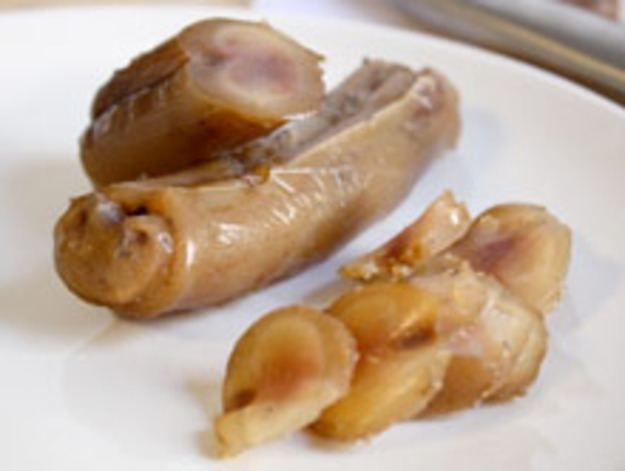 | ||
Similar Oden, Ragout, Konjac, Japanese Black, Horumonyaki | ||
The tendons of certain animals (particularly beef tendon) are used as an ingredient in some Asian cuisines, including the Chinese, Japanese, Korean, Indonesian, Thai and Vietnamese traditions. Tendon is tough and fibrous, but becomes soft after a long period of cooking. In some cases it may be boiled for as long as eight hours, while in other dishes it is prepared by deep frying. It contain large amounts of collagen, and after boiling or stewing, it is sometimes described as mimicking the mouthfeel of high-fat cuts of beef despite its low fat content. One author described the taste of deep-fried tendon as being similar to chicharrón (fried pork belly).
Culinary uses
One popular Chinese dish is suànbào niújīn (蒜爆牛筋), where the tendon is marinated in garlic; it is often served at dim sum restaurants. In Japanese cuisine, beef tendon (gyū-suji) is a common ingredient in oden. Among several Korean menu, togani anju (도가니 안주) or boiled beef tendons is appreciated as snack with beer. There is a Thai cuisine steamed beef soup called Guay tiew nuea, and noodle, or toon, is added to the dish. In Indonesian cuisine, bakso urat is beef meatball filled with pieces of tendon, while soto kaki is spicy cow's trotters soup which includes cow's leg tendons. Another dish is mie kocok which is a noodle dish with meatballs, beansprouts and pieces of beef tendon. In Vietnamese cuisine, it is often used in pho.
